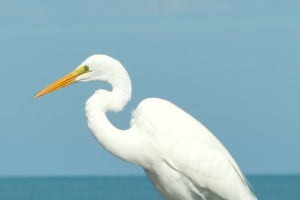Eagles have long fascinated humans with their powerful flight, sharp vision, and striking appearance. As one of the most majestic birds in the animal kingdom, eagles symbolize strength, courage, and freedom.
With their expansive wings and hunting prowess, eagles occupy a prominent place in various cultures and ecosystems around the world. Here's an insight into what makes this magnificent bird so unique.
Physical Features: Built for Strength
Eagles are built for power and precision, with several unique physical characteristics that allow them to dominate the skies.
Wingspan: Depending on the species, an eagle’s wingspan can range from 5 to over 7 feet, allowing them to soar effortlessly for long distances and reach great altitudes. The Bald Eagle, for example, can reach heights of up to 10,000 feet while flying!
Vision: Eagles have incredibly sharp vision, which is among the best in the animal kingdom. Their eyesight is estimated to be four to five times better than that of humans. This enables them to spot prey from a great distance, even when flying high in the sky.
Talons and Beak: Eagles have powerful talons, which they use to catch and grip their prey, and their sharp, hooked beak helps them tear through flesh. Their strength and precision make them efficient hunters, whether they're diving at high speeds to snatch fish or capturing small mammals on the ground.
Habitat and Distribution: Found Across the Globe
Eagles are spread across many parts of the world, adapting to different environments.
Types of Eagles: There are over 60 species of eagles, with the most famous being the Bald Eagle (found primarily in North America) and the Golden Eagle (found across the Northern Hemisphere). Other species include the Harpy Eagle, known for its large size and powerful claws, and the African Fish Eagle, which is prevalent in sub-Saharan Africa.
Habitats: Eagles are versatile birds that inhabit various environments, from mountains and forests to deserts and coastal regions. They often nest in tall trees or cliffs to get a panoramic view of their surroundings and to avoid predators.
Diet: A Skilled Predator
Eagles are carnivorous and possess extraordinary hunting skills that make them formidable predators.
Fish and Small Animals: Many species of eagles, like the Bald Eagle, prefer a diet of fish. With their sharp talons, they can easily snatch fish out of the water. Others, like the Golden Eagle, prey on mammals such as rabbits, squirrels, and sometimes larger animals like deer fawns.
Scavengers: Some eagle species, like the African Fish Eagle, are opportunistic feeders and will eat carrion if necessary. Their adaptability in terms of diet helps them survive in different habitats.
Top 30 Amazing Facts About Eagles
Video By Top10Best
Symbolism: A Powerful Figure
Eagles have held a place of reverence in many cultures due to their powerful presence and ability to soar high.
Freedom and Strength: In many cultures, eagles represent freedom because of their ability to fly at great altitudes, symbolizing independence. Their strength, keen vision, and dominance over the skies also make them symbols of power and courage.
Cultural Importance: The Bald Eagle, for example, is the national bird and symbol of the United States, representing freedom and national pride. In ancient Rome, the eagle was a symbol of the Roman legions, representing power and dominance.
Dear Lykkers! The eagle, with its awe-inspiring strength, sharp vision, and majestic flight, stands as a symbol of freedom and power across the world. Whether soaring over mountains or diving for prey in the water, this bird of prey captivates and inspires admiration. As we continue to protect and preserve their natural habitats, eagles will remain a symbol of the wild’s untamed beauty for generations to come.


